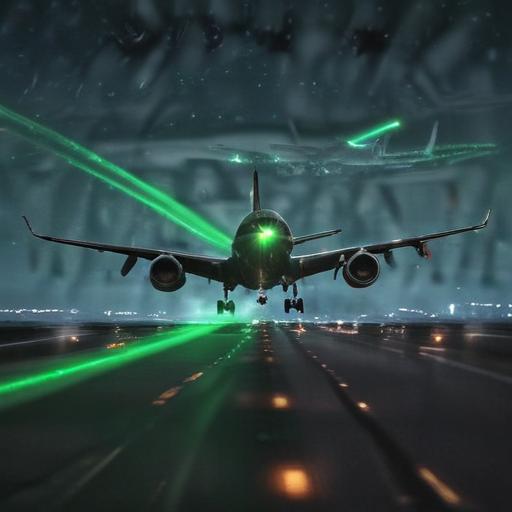A recent incident at Chennai International Airport has spotlighted the growing peril of laser strikes aimed at aircraft, highlighting a severe risk to aviation safety and public security. On June 5, 2025, Emirates Flight EK542, en route from Dubai to Chennai, was struck by a green laser beam during its final descent. The blinding effect necessitated an aborted landing and a go-around maneuver, averting possible serious consequences due to the prompt actions of the flight crew and air traffic controllers.
The Emirates Boeing 777-300ER, carrying 304 passengers, was about six nautical miles from landing when the cockpit was illuminated by the laser. This unexpected distraction significantly compromised the pilots’ ability to control the aircraft during a critical phase of flight. Fortunately, after the disruption, the plane landed safely on the main runway, underscoring the acute dangers these laser incidents can pose, particularly during takeoff and landing.
In the aftermath of the strike, Chennai’s Air Traffic Control notified local authorities, and the source of the laser was quickly disabled. This event has intensified discussions about the rise of laser strikes, with aviation experts emphasizing their harmful effects on pilots’ ability to operate aircraft safely and the subsequent erosion of public confidence in air travel safety.
The Airports Authority of India (AAI) has decried such actions, stressing that laser beams can cause temporary blindness and distractions. They urge heightened vigilance and swift reporting of any laser activities in airport vicinity. The Greater Chennai Police reinforced this message through a public advisory, clarifying the legal ramifications of such dangerous behaviors, which may lead to charges under relevant laws.
This incident is not isolated; May 2025 alone recorded five instances of aircraft laser strikes at or near Chennai International Airport. Alarmingly, just days before the EK542 incident, another Emirates flight was targeted. With similar occurrences involving Gulf Air flights, it suggests a rising trend of laser-related threats at the airport, raising serious alarms about flight safety.
On a broader scale, India’s Directorate General of Civil Aviation (DGCA) has amplified its focus on this issue in its National Aviation Safety Plan for 2024-2028. The DGCA recognizes the key risks lasers pose during aircraft approach and landing phases, advocating for nationwide educational initiatives to inform the public of these hazards.
Across India in 2023, 144 laser-related incidents were reported, a worrying increase driven by the easy accessibility of laser devices. While some strikes might be accidental, the proliferation of such technology complicates preventative measures and enforcement efforts against those responsible.
As celebrations and local events like weddings are often correlated with upsurges in laser usage, Chennai airport management is enhancing security training for personnel and looking to implement advanced detection technologies. These initiatives aim to promptly identify laser sources and mitigate risks.
The international dimension of this issue is equally important. The International Civil Aviation Organization (ICAO) has urged member nations to adopt stricter regulations and bolster public awareness regarding the dangers of laser strikes. An international, coordinated effort is essential to effectively address this issue and safeguard aviation safety on a global scale.
In light of these concerns, the recent laser incident involving Emirates Flight EK542 underscores the need for continuous vigilance and proactive measures within both the aviation industry and the public. By fostering a culture of awareness and accountability, it is hoped that incidents like these can be curtailed, reinforcing the safety and reliability of air travel globally. Enhanced public education and the introduction of technology to detect laser threats may pave the way for ensuring that the skies remain secure for all travelers.
